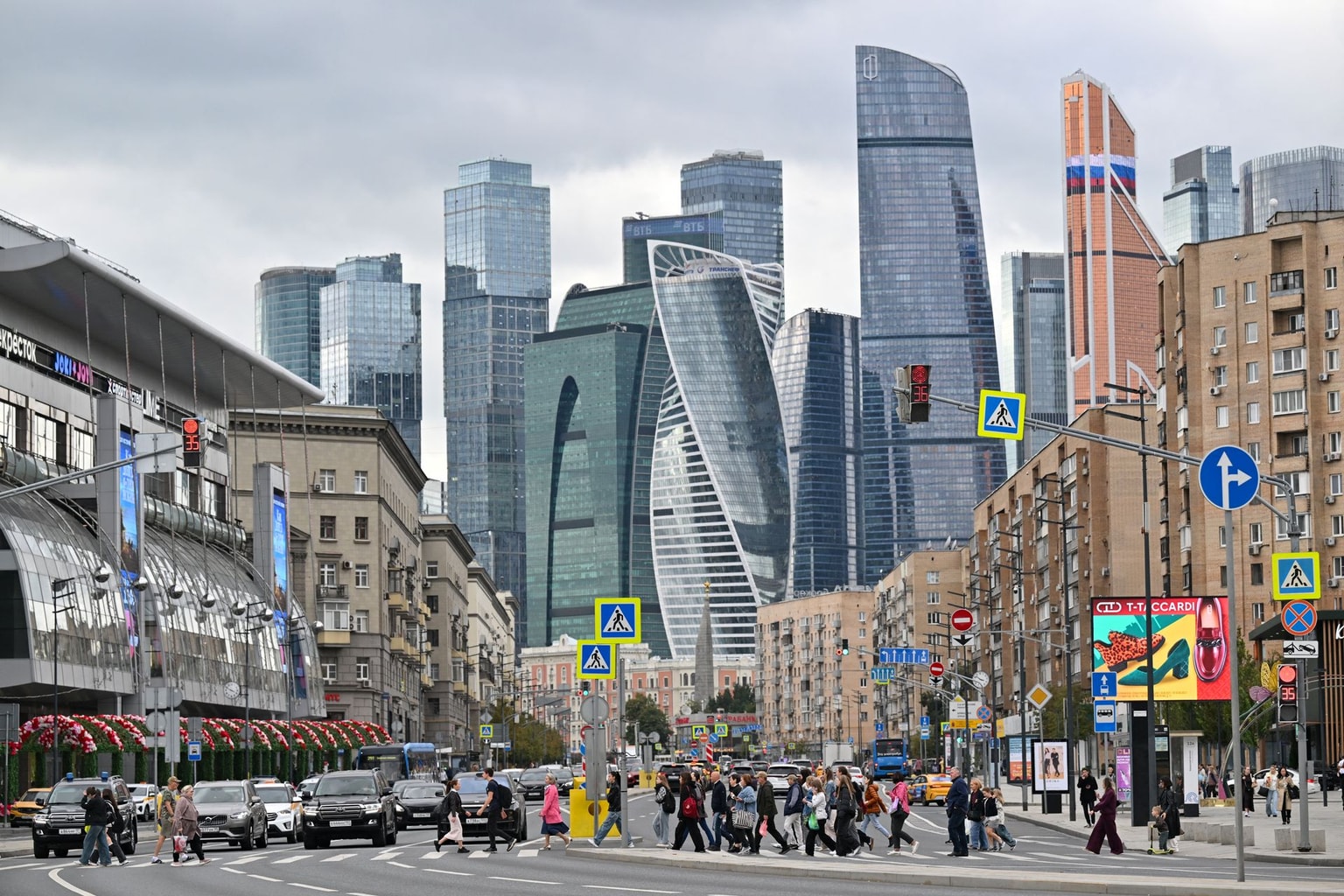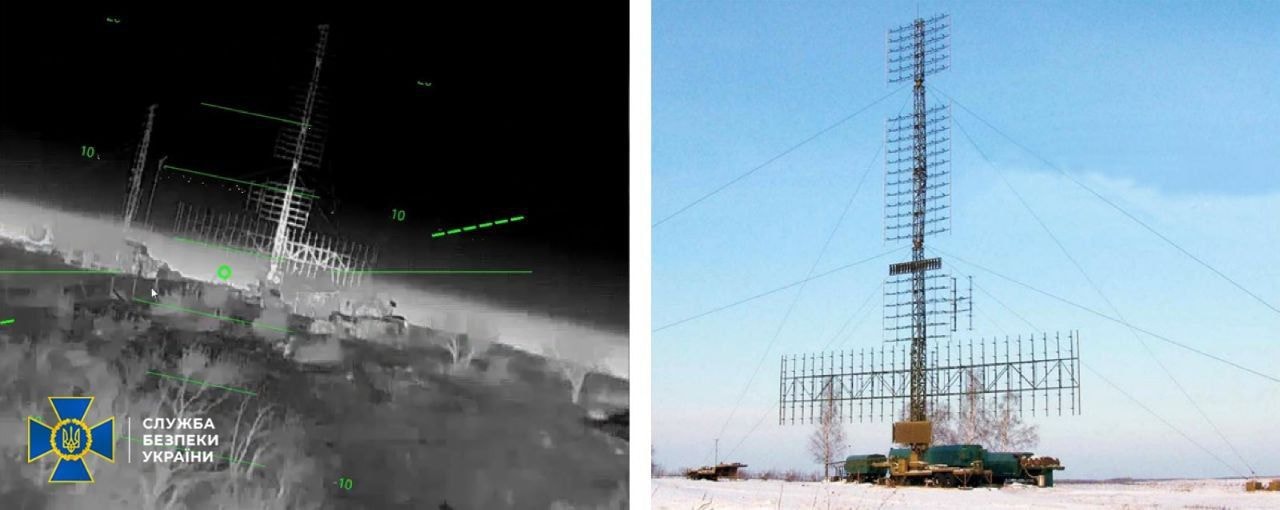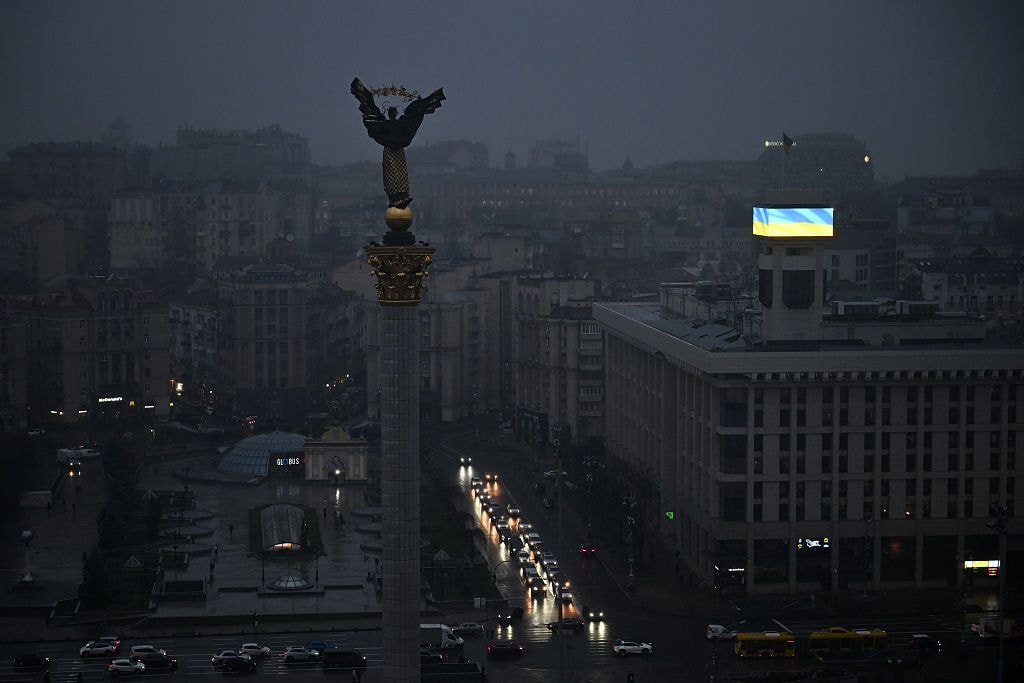
Russia attacked Chornobyl Nuclear Plant in February, damaging confinement. Can it be fully restored?
A photograph shows the New Safe Confinement at Chornobyl Nuclear Power Plant which cover the number 4 reactor unit in Ukraine on May 29, 2022, amid the Russian invasion of Ukraine. (Dimitar Diloff/AFP via Getty Images)
The confinement over the fourth nuclear reactor at the Chornobyl Nuclear Power Plant has not been functioning properly as a protective shield for almost three months.
On Feb. 14, on the day of the Munich Security Conference, a Russian drone hit the structure over the nuclear facility, creating a 15-meter hole and jeopardizing atomic safety in Europe. The drone exploded upon impact with the confinement and caused a fire that took about three weeks to extinguish.
"We are at war. Any facility can be attacked, but it was the pinnacle of cynicism and irresponsibility on the part of the Russians," Svitlana Hrynchuk, Ukraine's environmental protection and natural resources minister, told the Kyiv Independent.
The restoration of the facility, which cost nearly $2.3 billion to build, could take months, if not years.
In the meantime, the risk remains, as radioactive substances, including ultra-radioactive graphite, are still confined under the now-damaged structure.
How bad is the damage?
The Shahed-type drone was flying too low, at an altitude of 85 meters, so air defenses could not shoot it down, President Volodymyr Zelensky said in response to the attack that damaged the Chornobyl confinement.
The drone's hit damaged the confinement's outer shell and inner lining, which protected the structure from moisture and rust.
Hrynchuk said it was fortunate that the drone damaged the outer part of the structure rather than directly the part of the layer over the reactor, which helped avoid a disaster. Since the attack, experts have not recorded a rise in radiation at the facility.
"At the same time, due to the impact and destruction, a part of the functions for which this facility was built were lost," she said. "The facility was partially depressurized."

Although the initial fire was extinguished quickly, the smoldering of the waterproof membrane inside the structure lasted another three weeks. To extinguish the smoldering, firefighters had to break through holes in the outer layer of the structure and spray water inside.
According to Hrynchuk, emergency workers had to make about 200 such holes, and the total area of the fire was about 50 square meters.
The structure was designed to be waterproof. This was supposed to help ensure that the shield over the reactor would last 100 years. Because of the Russian attack, it lasted only six.
Is there a chance to restore the facility?
One of the main functions of the confinement was to protect the world outside from radiation and reactor inside from the weather, not from drones with high-explosive warheads.
Ukraine now needs to restore the shield.
"Our goal is to renew it 100%," Hrynchuk said. "We must restore the facility's hermeticity, all its functions."
According to the minister, Ukraine, together with foreign experts, should complete an assessment of the damage after the attack in May, and in June, a short-term plan for the restoration of the facility should be ready. The reconstruction plan will also be presented in June at a conference organized by the European Bank for Reconstruction and Development.
The first goal is to close the hole in the shield to protect everything underneath from precipitation and environmental calamities. After that, the most challenging stage — restoring full functionality of the confinement.
It is too early to say exactly when the work on the structure will be completed and how much it will cost, Hrynchuk said.
"For the international community and, of course, for Ukraine, it is a priority (to restore the confinement)," the minister said.
"The facility is quite complex and considered a high-level risk one. So, all experts who can contribute to making this work as fast and high-quality as possible are involved."











